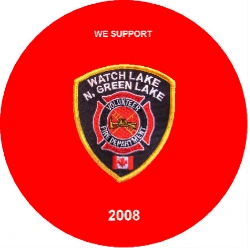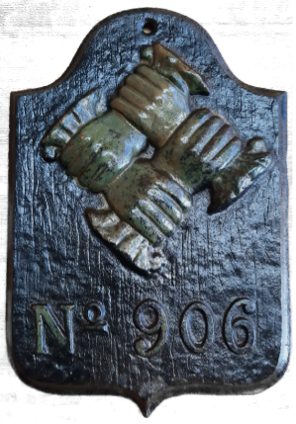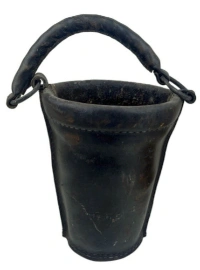About 20 years ago, the department began an ambitious rebuilding program. To update our service to the community, we required new fire halls, updated firefighter apparatus, and vehicles that met the fire underwriters’ standards. The annual fire dues were very low at that time and not all property owners were paying them. Since we were an independent department with no financial support from the CRD. we had to convince the residents of our fire protection area that we would only be able to accomplish the necessary updates if the annual fire dues were increased to a reasonable level. Most residents supported the upgrade of the department, but a few properties remained unpaid.
To encourage equitable support, one solution was to refuse service to non-paying properties, a practice common in the United States since the 1920s. To protect the woodlands and other properties in the surrounding area, however, we would respond to fires at the un-paid properties, and the insurance companies would be informed of their lack of coverage.
Following a lengthy discussion of these issues at an Annual General Meeting the directors were approached by Burt and Evelyne Holmes who suggested placing dated, gatepost markers on all paid properties.
 As an example, they cut a 5cm red circle out a Coca Cola box and wrote the date on the front. They were convinced something like this would instill a sense of pride and participation in the subscribing property owners who were not able to be directly involved in fire department operations. The markers would also give the firefighters an indication of who had paid or hadn’t paid their annual dues. We decided to try this idea and, despite some difficulties in distribution, the first year’s stickers were met with moderate success. We have continued to send out different colored stickers every year since.
As an example, they cut a 5cm red circle out a Coca Cola box and wrote the date on the front. They were convinced something like this would instill a sense of pride and participation in the subscribing property owners who were not able to be directly involved in fire department operations. The markers would also give the firefighters an indication of who had paid or hadn’t paid their annual dues. We decided to try this idea and, despite some difficulties in distribution, the first year’s stickers were met with moderate success. We have continued to send out different colored stickers every year since.
 When Burt and Evelyne suggested the use of annual stickers, we were unaware that this method of fire protection certification had historical precedents. As early as the 18th and 19th centuries, metal fire marks or plaques were issued by insurance companies in the US, Australia, and Britain for installation on buildings to prove paid fire responders. The payments for the fire marks helped cover the expenses of the early firefighting companies with their limited resources.
When Burt and Evelyne suggested the use of annual stickers, we were unaware that this method of fire protection certification had historical precedents. As early as the 18th and 19th centuries, metal fire marks or plaques were issued by insurance companies in the US, Australia, and Britain for installation on buildings to prove paid fire responders. The payments for the fire marks helped cover the expenses of the early firefighting companies with their limited resources.
 In 1736 for example, Benjamin Franklin coaxed 30 of Philadelphia’s citizens to join him in forming the Union Fire Company, the first organized volunteer fire department in the colonies. This was before the development of horse drawn pumpers and personal protective equipment such as helmets and fire-resistant jackets and pants. Referred to as the “bucket brigade”, this group of volunteers responded to fires equipped only with leather buckets for carrying water and fabric bags for their basic equipment.
In 1736 for example, Benjamin Franklin coaxed 30 of Philadelphia’s citizens to join him in forming the Union Fire Company, the first organized volunteer fire department in the colonies. This was before the development of horse drawn pumpers and personal protective equipment such as helmets and fire-resistant jackets and pants. Referred to as the “bucket brigade”, this group of volunteers responded to fires equipped only with leather buckets for carrying water and fabric bags for their basic equipment.
It is interesting to note that Franklin was also a forerunner in promoting the FireSmart concept of community awareness when he published the following in the Pennsylvania Gazette:
In the first Place, as an Ounce of Prevention is worth a Pound of Cure, I would advise ’em to take care how they suffer living Coals in a full Shovel, to be carried out of one Room into another, or up or down Stairs, unless in a Warming pan shut; for Scraps of Fire may fall into Chinks and make no Appearance until Midnight; when your Stairs being in Flames, you may be forced, (as I once was) to leap out of your Windows, and hazard your Necks to avoid being oven-roasted.
Franklin would no doubt be amazed at the incredible community support and the level of service provided by volunteer departments in the US and Canada today.


